This post may contain affiliate links. This just means I may receive a small commission at no extra cost to you for helping them promote their product or service. I don’t endorse any services I don’t personally use or recommend.
Budget travel in Raja Ampat? The crystalline diver’s paradise with islands scattered like pearls in the farthest corner of our planet? Yes, it’s possible. It’s definitely not going to be the cheapest trip you take in Asia but if you’re an ocean lover/diver/snorkeler, it’s a trip that you MUST take once in your life. While I’m not a diver, I can still confidently say that Raja Ampat is the best snorkeling that I’ve ever experienced. Better than the Red Sea in Egypt, Hawaii, Panama, The Maldives, Thailand…you name it. Raja Ampat is the pinnacle of colorful ocean reefs.
But alas, these remote, pristine places on our planet are few and far between, which means they often come with a hefty price tag.
You’ll see tours to Raja Ampat advertised online for thousands, some as high as $10,000. But there are other ways to visit this Indonesian archipelago. The liveaboard diveboats and luxury resorts come with a hefty price tag, but much like my time spent on a budget of $50 per day in the Maldives, spending way less is possible.
Can You Budget Travel in Raja Ampat?
As we’ve already established…yes. You can undoubtedly budget travel in Raja Ampat. There are three things that *can* cost you a pretty penny in the island destination.
- Transportation to/between/from the islands.
- Accommodation.
- Dives + Excursions.
This is because most people book a stay at a dive resort, pile on the excursions, and use the resort’s speedboats to get around. But what if I told you there was a far less convenient and far cheaper way to travel? Because, let’s be honest, budget travel comes with a certain level of discomfort at times. But to save thousands of dollars?? I’m here for it.
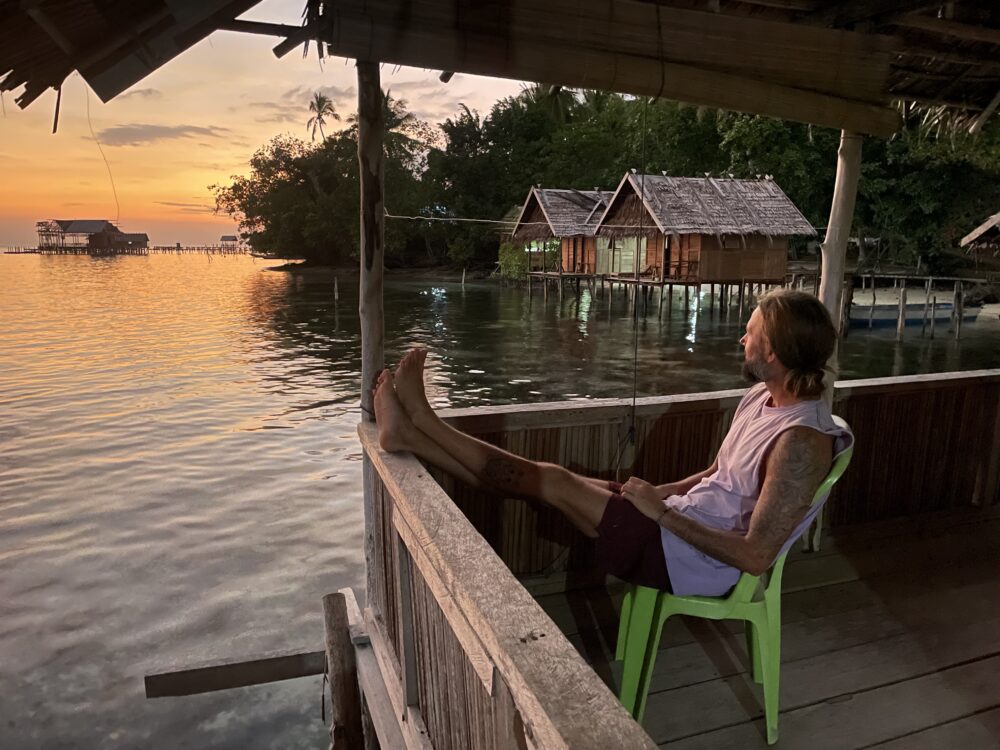
How Much Did We Spend in 2 Weeks?
We were only in Raja Ampat for two weeks. Did I wish it had been longer? Absolutely, but I’ll get to that later.
In total, we spent $930 for two weeks for two people.
This included three snorkeling excursions by boat, two dives (for one person), a trek to see the birds of paradise, 13 nights of accommodation + food, island beers, and all transport between the islands. Budget travel in Raja Ampat does not mean that you have to do less within the islands!
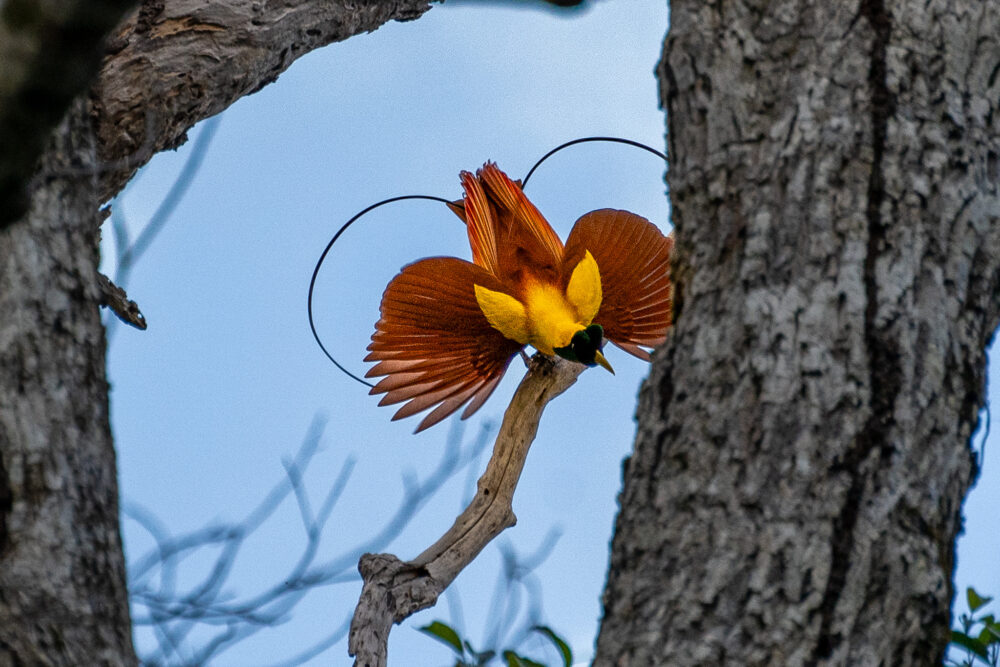
Some of the costs you should know in advance are:
- Raja Ampat Marine Park Entrance Fee (paid once from the Wasai harbor): $20 per person
- Public Ferry From Sorong to Wasai: $7.50 per person.
- Average Homestay Price: $60 for two people, including all meals
- Average transport between islands within Raja Ampat: $30 per small boat
- Dive Cost: $37 per dive
Side Bar: Was Two Weeks Enough Time?
We were happy with the time we spent in Raja Ampat. In two weeks, we visited three different islands. Indonesia’s visa is for 30 days, and you could easily spend that entire time in Raja Ampat if you have the budget. But many travelers (like us) combined our trip to Raja Ampat with Sulawesi, an incredible island nearby. It was a tight squeeze to fit them both in 30 days, if I’m being honest.
I would not recommend staying for less than ten days in Raja Ampat.
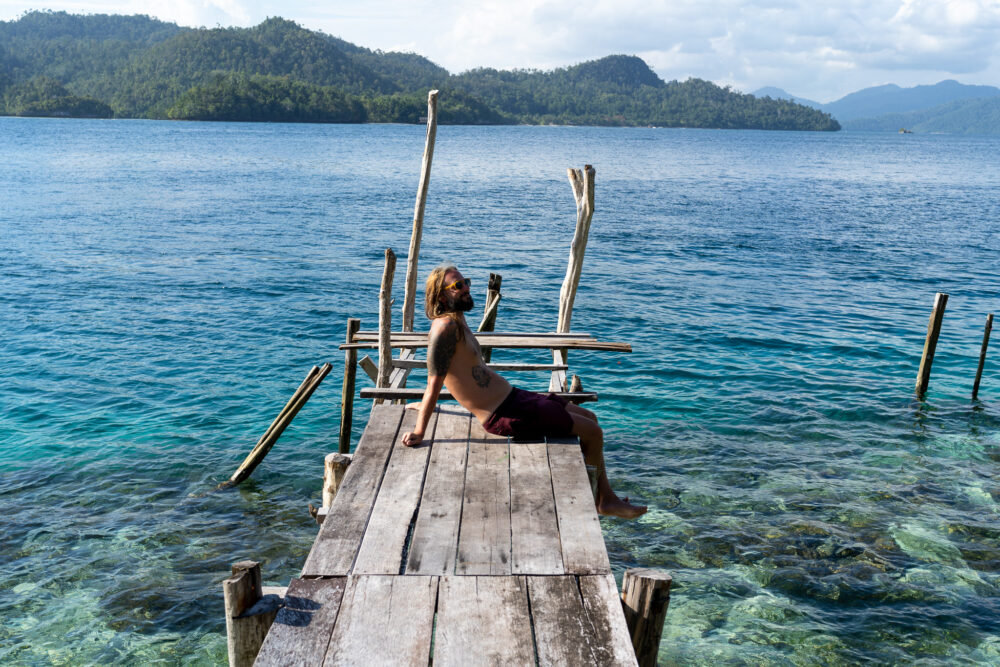
How long to stay on each island: I recommend spending three days on each island. If you are an avid diver, then you should plan to stay longer on the islands with the best dives. But for the average traveler, this is plenty of time to snorkel the shores, explore the island, and enjoy all the relaxation your homestay offers.
Are There ATMs on Raja Ampat’s Islands?
NO! This is vitally important for budget travelers like us who won’t be staying at places with wifi or access to credit card machines.
Your last chance to access cash will be in Sorong (where you fly into), and you should stock up!!! I pulled out slightly over $1,000 of rupiah for our excursions into the islands.
Is there Wifi on Raja Ampat?
Not a chance. In fact, even with a local SIM card, you’ll have an extraordinary amount of trouble accessing the internet. Most islands have about a 1-2 hour period where a satellite passes near enough for the SIM to work. This is a place to disconnect. Not for digital nomads.
Getting to Raja Ampat on a Budget
Let’s take a look at exactly where Raja Ampat is, shall we?
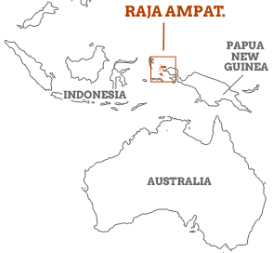
It’s a tiny smattering of little islands off the coast of Papua New Guinea. But these islands belong to Indonesia. To reach Raja Ampat’s scenic small islands, you’ll first have to fly into West Papua to a city called Sorong.
There is nothing to do in Sorong. Don’t waste your time and money hanging around there.
Instead, head straight to the local ferry from Sorong to Wasai. It leaves twice a day at around 9 AM and 2 PM. This ferry takes just about 2 hours to dock in Wasai. This is a port town on a large island, Waigeo, and, technically speaking, the entrance to Raja Ampat. You’ll pay the marine park entrance fee here before hopping on a boat to your chosen Raja Ampat island. Your homestay will have a boat + driver waiting for you, so it’s important to communicate your arrival time/which ferry you’ll be on ahead of time.


How YOU Can Make Raja Ampat Less Expensive: Tips to Make Your Trip Cheaper
Here are a handful of things that we wish we had known before visiting Raja Ampat, which could have helped us budget our trip a little better.
1. Know the Difference Between Luxury Dive Resorts/Hotels & Local Guesthouses
You’ve now seen me repeatedly refer to “guesthouses.” When it comes to Raja Ampat accommodation, there are essentially two options that are not liveaboard cruises: Dive Resorts and Hotels costing upwards of $200 per night and guesthouses costing $50+ per night for two (including meals).
But how to find these guesthouses?
Well, there are some listed on booking.com, but I really don’t recommend booking on ANYTHING other than StayRajaAmpat.com. This website is where the most recent reviews are posted. You can filter by island and look at all the amenities offered at each stay. It’s also the ONLY WAY to book directly with the property. Remember what I said about internet access? These homestays have difficulty managing bookings on any platform other than this one.

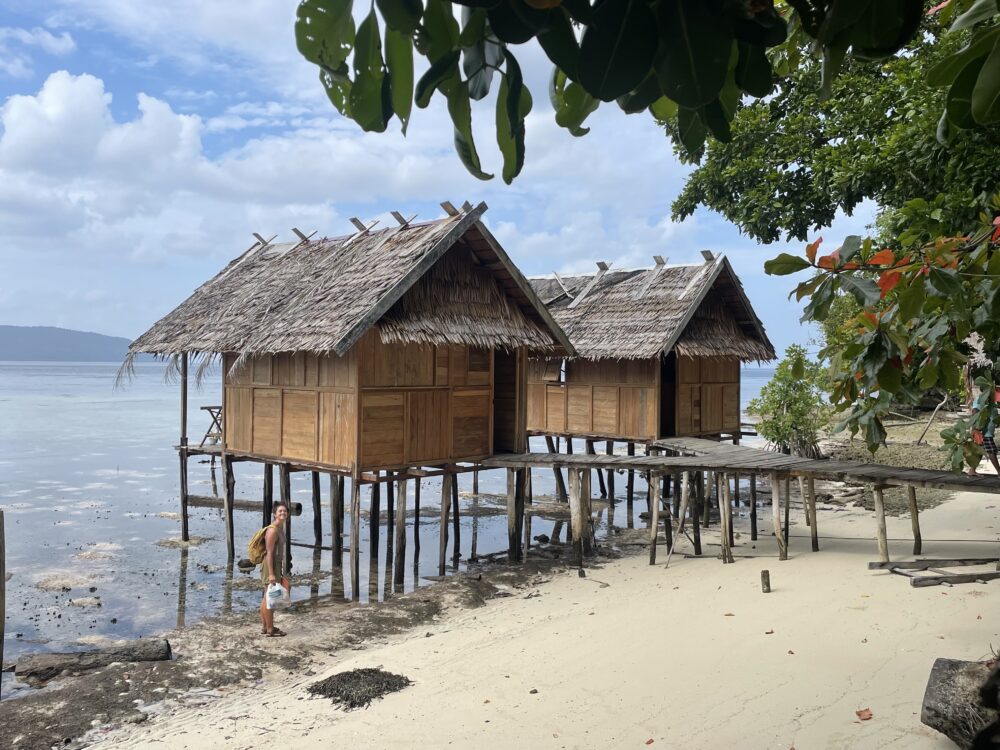
It works a little weirdly, though. You have to “request a booking,” and then they have 3-5 days to reply with a yes or no. Then you have, in turn, two days to confirm the booking. Because of this, I recommend starting your reservations at least a month ahead of time. This way, you won’t face any problems finding a homestay with availability.
Looking for incredible diving? Another excellent option would be to join a liveaboard. There are lots of semi-affordable (okay, it’s very expensive, but not for the amount of dives you get) liveaboard ships that sail during the high season. These ships offer the best bang for your buck if you are here to dive and have certifications already.
Guesthouses almost always include breakfast, lunch, and dinner. There are no restaurants on these islands.
2. Hire Local Transport Between the Islands
Rather than expensive speed boats, if you opt for homestays, you’ll most likely travel by wooden canoe with an outboard motor. The rides between islands are typically less than 1-2 hours, with a few exceptions.
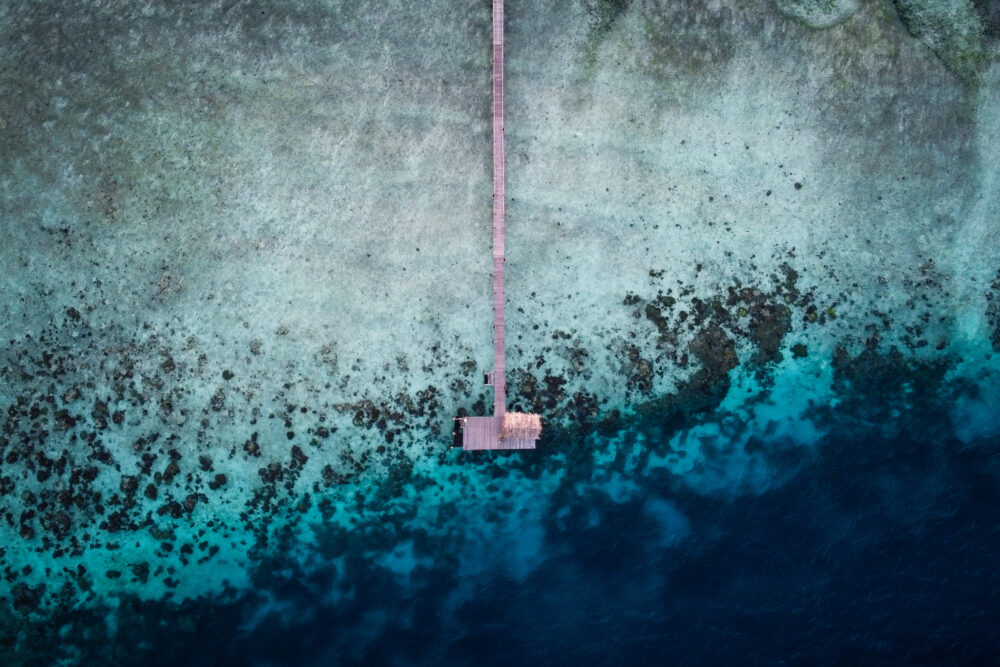
The best way to travel here is to have your current homestay drop you off at your next homestay. Occasionally, you’ll get really lucky and be able to share the boat with another couple going to the same island. But this is rare. Depending on the time of year and which islands you’ll visit, you might spend most of your trip alone.
3. Choose the Right Islands for You
Not every island offers the same attractions. I wrote a full blog post to help you build the perfect Raja Ampat itinerary.



4. Split Excursions with Other Travelers
When it comes to snorkeling excursions, the price is paid by boat, not by traveler. On most islands, you will have the choice between a small canoe for up to 3 people or a larger speedboat, which can hold 8. The speedboat is more expensive but is required for certain excursions because of the rough seas in a few popular areas. Playaneimo + Wayag, for example.
The $500 fee for Wayag is insane and, in my opinion, not worth the money just for a viewpoint. But the shorter ride to Playaneimo costs $200 per speedboat including a snorkeling trip to Rufus Island. This is very reasonable when split with another couple or two.
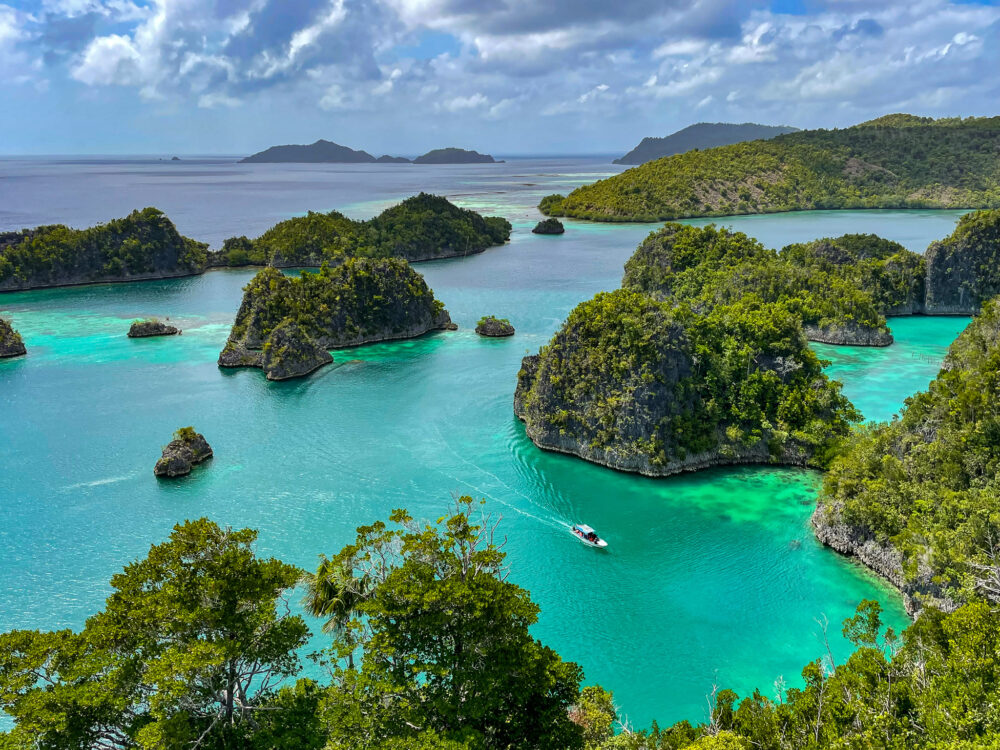
The problem with this strategy is that there are only a few islands popular enough with travelers that you might find others to join your excursions. Arborek and Kri are those islands. Keep that in mind when you’re planning out your ideal excursions. We did ALL our excursions from Arborek because it was the only island on which we weren’t totally alone.
5. Don’t Overstay Your Visa
Indonesia is stupidly strict about visa regulations. I got fined $65 and almost missed my flight because my visa was one day overextended. Don’t make the same mistake.
6. Bring Your Own Snorkel Gear
While many homestays did have a set of snorkel gear to loan, it rarely fit and was usually in poor condition. Bring your own to ensure that you can snorkel from your bungalow comfortably every morning.
If you forget, rentals cost around $3 per person on average.
7. Don’t Come Planning to Get Padi-Certified
This is not a destination for beginner divers. For many reasons.

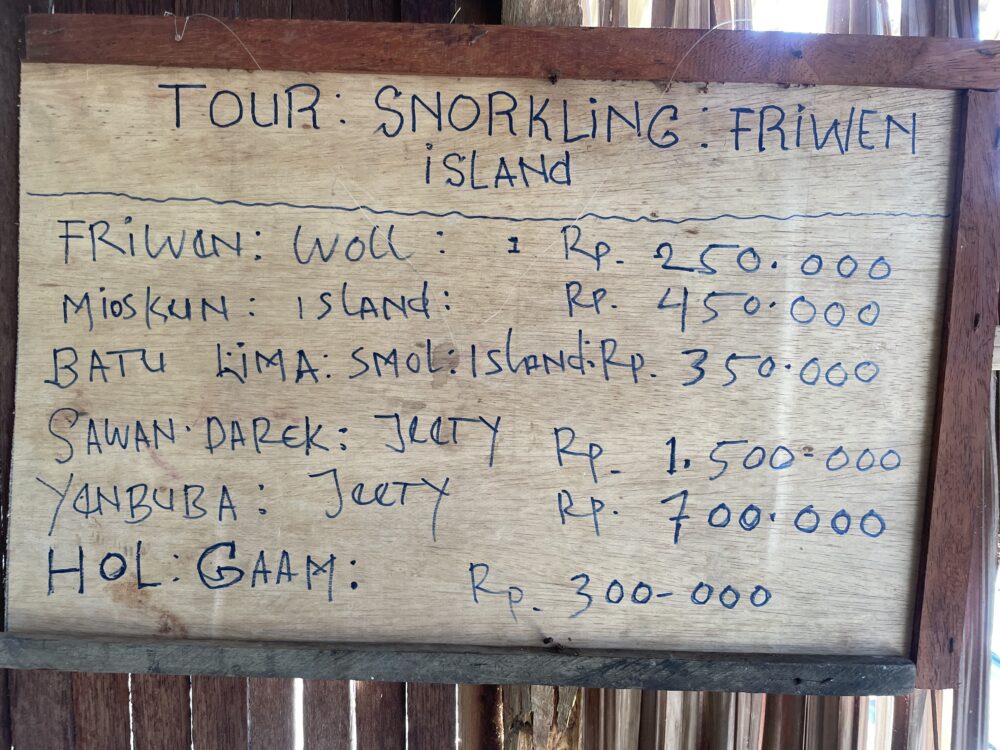

The biggest thing that matters to you is that only a handful of local islands have dive centers that can perform PADI certifications. Those islands are also the only ones that can accommodate discovery dives for those who are not yet certified. (Arborek + Kri).
Another reason this isn’t a good place for PADI or beginner divers is that it’s very difficult to dive. The currents are super strong, there is loads of coral, and plenty of dangerous critters. You can very easily damage the reef if you’re an inexperienced diver. Why start at the very best of the best when it comes to diving?
8. Skip the Alcohol.
An easy way to save lots of money. Beer on the islands is expensive at $4 a bottle. Skip it, and your budget will thank you.
9. Bring Lots of Snacks from the Mainland
While a few of the more developed islands have small shops with cookies and candy, there is little in the way of snacks on the islands. You’ll be given three large meals per day, but if you’re someone who loves a snack…I would stock up before you leave Sorong.
10. Travel outside high-season.
This is a controversial money saver tip. The high season in Raja Ampat is October- January. It has little to do with the temperatures, which are mostly the same year-round, and everything to do with the ocean currents which tend to chill out a bit during the high season months. This makes swimming safer, diving better, and unique species like Mantas come through the islands to feed.

Outside those months, currents are ripping, and thus, prices are much lower. You can still snorkel, dive, and swim to your heart’s content. Just expect the possibility of rough seas to hinder your exploring.
Remember that every single island in Raja Ampat is rimmed with stunning coral reefs and abundant fish species. This means you don’t even need excursions to experience excellent snorkeling in the archipelago! You can travel to these islands for $50 per day and experience one of the world’s last slices of paradise. For more tips on Budget travel in Raja Ampat, be sure to check out my Instagram highlights!
Save This Budget Travel in Raja Ampat Guide For Later!

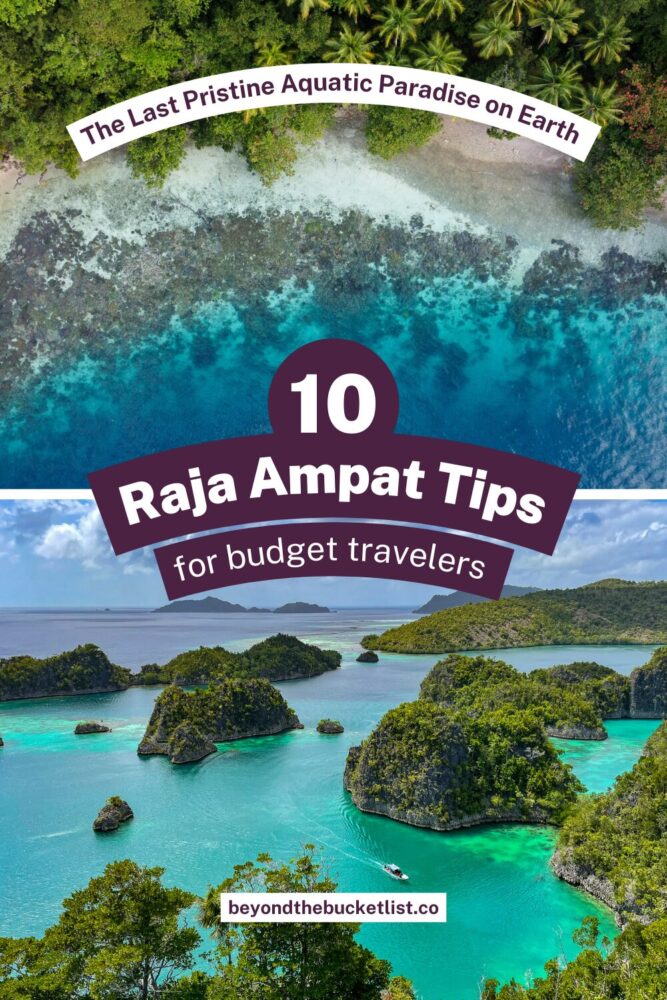





No Comments